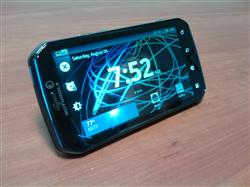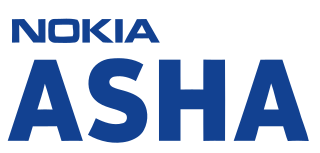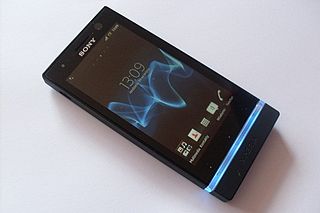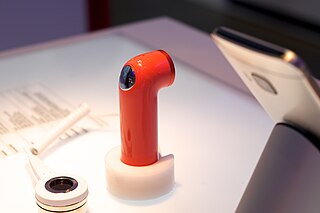
Mobile accessories include any hardware that is not integral to the operation of a mobile smartphone as designed by the manufacturer. Its purpose is to protect the mobile from being damaged or to use for more convenient use of the mobile.

Mobile accessories include any hardware that is not integral to the operation of a mobile smartphone as designed by the manufacturer. Its purpose is to protect the mobile from being damaged or to use for more convenient use of the mobile.



Cases, which are designed to attach to, support, or otherwise hold a smartphone, are popular accessories. Case measures are based on the display inches (e.g. 5 inch display). There are different types:
Holsters are commonly used as external cases for devices, and/or are made of plastic and without exposed rigid corners. Heavy duty cases are designed to protect from drops and scratches.
A standing (or kickstand) case keeps the device standing upright. The collapsible kickstand of some horizontal cases holds the device in a flatter or steeper angle, depending on whether it is horizontally placed on a surface clockwise or counter-clockwise. The flat angle allows tapping without pushing the device over, while the steep angle is intended for watching.
Folio cases are a combination of a case and stand, and may include a keyboard (USB for OTG smartphones or bluetooth keyboard).
External cases and design covers can serve for protection and personalization. These are the result of the relatively "naked" designs produced by manufacturers such as Apple, where the metal and glass components of the device are exposed and vulnerable to damage. They are distinct from holsters, in allowing use of the device while in the case, but in many instances include a belt clip or other device giving it the functionality of a holster. They are made of plastic, rubber, silicone, leather, or adhesive-backed vinyl pieces. Vinyl material may be calendered or cast, with the latter being more expensive. Calendered vinyl is expected to only be used for short-mid duration (10 years), while cast vinyl is used on a more long-term basis. Calendered vinyl also tends to shrink in the heat and can be shaped into any form (above 80 degrees Celsius), and may fade in direct sunlight.
Customized phone cases use custom printing. Different companies have different methods of printing on cases; some utilize sublimation, others Inkjet-printed skins, others dye-sublimation 3D printing methods.
Functional cases can integrate external batteries or a USB, bluetooth, or Wifi keyboard and touchpad.
Anti-loss keychains can easily locate a smartphone through the GPS and Bluetooth low energy antennas of the phone. Once the user is within range of the smartphone, both the smartphone and device will alert the user. It also can be used to remotely take photographs using Bluetooth.
Phone charms are used to decorate the device. They attach either by a strap or by plugging into the jack plug.
Some smartphones feature SD card slots (usually the smaller Micro-SD variant). These, in combination with a compatible SD card, can be used to transfer files from one device to another, or simply to increase the storage capacity of the phone.
Wi-Fi SDs are Wi-Fi communication devices on a special SD card inserted into the SD card slot. They can move pictures to a local computer or an online photo-sharing service.
Additionally, many devices have USB On-The-Go and support USB storage, in most cases using either a special USB micro-B flash drive or an adapter for a standard USB port. Such adapters can also be used with various other USB devices, such as hardware mice and keyboards.

Mobile phone chargers have gone through a diverse evolution that has included cradles, plug-in cords and obscure connectors. However, devices built between 2010 and 2020 generally use micro-USB connectors, while newer devices tend to use USB-C. Apple devices often use proprietary connectors.
External batteries are most commonly stand-alone devices, which can be cabled to the phone's primary charging connector.
Smart lenses are larger and more capable than the phone's camera, having optical zoom and other features. The smartphone connects to them over Wi-Fi using an app. They are compatible with most smartphones. Smart flash can be used also for selfies.
Selfie sticks are hand-held extensible monopods used to move the devices further away than would have been possible with the reach of the human arm, allowing for the camera to take shots to be taken at angles that would not have been possible before.
A phone stand keeps the device standing upright on the desk.
A smartwatch is a wearable computing device with a touchscreen display that closely resembles a wristwatch or other time-keeping device. Smartwatches have become a "must-have" accessory for smartphones because of their multi-purpose use-case.[ clarification needed ] One can manage one's notifications, attend calls, ask questions to voice assistants and more. Smartwatches also act like a fitness tracker and a medical device.
A tripod; it is designed to hold the device in place in a fixed location on the ground during the capture of photographs.
Micro-USB to HDMI cables are used in smartphones with MHL.
External device designed to cool down a phone for maintaining or improving performance (SoC, battery lifespan, charging speed). May include heatsink, axial or centrifugal fan(s), heat pipes, vapor chamber, peltier, water-to-air heat exchangers, magsafe, wireless charging and/or programmable rgb lighting. [1] [2]
Pressy Button is a programmable button that can be inserted into the headphone socket of a smartphone or tablet and used as an extra button to perform tasks on the device. [3]

A personal digital assistant (PDA) is a multi-purpose mobile device which functions as a personal information manager. PDAs have been mostly displaced by the widespread adoption of highly capable smartphones, in particular those based on iOS and Android, and thus saw a rapid decline in use after 2007.

A mobile phone feature is a capability, service, or application that a mobile phone offers to its users. Mobile phones are often referred to as feature phones, and offer basic telephony. Handsets with more advanced computing ability through the use of native code try to differentiate their own products by implementing additional functions to make them more attractive to consumers. This has led to great innovation in mobile phone development over the past 20 years.
The Nokia 6000 series or Classic Business series is range of mobile phones marketed by Nokia. This family of phones is notable for their conservative, unisex designs, making them popular with business users.

A headset is a combination of headphone and microphone. Headsets connect over a telephone or to a computer, allowing the user to speak and listen while keeping both hands free. They are commonly used in customer service and technical support centers, where employees can converse with customers while typing information into a computer. They are also common among computer gamers and let them talk with each other and hear others while using their keyboards and mice to play the game.
The HTC Startrek is HTC's first clamshell smartphone. It is sold as the Qtek 8500, the Orange SPV F600, Dopod S300, the i-mate Smartflip, Cingular 3100, Cingular 3125, and the HTC S411 in Brazil.

The Nokia E52 and Nokia E55 are mobile phones from Nokia's business-oriented Eseries range. They run Symbian OS v9.3. The E55 was announced on 16 February 2009, whilst the E52 was announced later on 6 May 2009. They are both physically and functionally identical, except that the E55 has a 'half-QWERTY' keyboard, similar to the SureType keyboard on BlackBerry Pearl, whereas the E52 revision has a traditional T9 keypad.

The LG enV3 is a mobile phone built by LG Electronics, and released from Verizon Wireless in the United States and Telus Mobility in Canada. It succeeded the LG enV2. Along with a slimmer design, the enV3 also boasts a full keyboard, a 2.6-inch screen and a 3.0-megapixel camera. In addition to standard phone and text messaging capabilities, the enV3 can be used as a portable music player as well as Internet capabilities such as e-mail and web browsing. The phone is Bluetooth enabled.

A smartwatch is a portable and wearable computer device in a form of a watch; modern smartwatches provide a local touchscreen interface for daily use, while an associated smartphone app provides management and telemetry, such as long-term biomonitoring. While early models could perform basic tasks such as calculations, digital time telling, translations, and game-playing, smartwatches released since 2015 have more general functionality closer to smartphones, including mobile apps, a mobile operating system, and WiFi/Bluetooth connectivity. Some smartwatches function as portable media players, with FM radio and playback of digital audio and video files via a Bluetooth headset. Some models, called watch phones, have mobile cellular functionality such as making telephone calls.

The LG Quantum or Optimus 7Q is a slider smartphone which runs Microsoft's Windows Phone operating system. The LG Quantum was launched November 8, 2010 on AT&T. The C900 ran the Windows Phone 7.0 operating system out-of-the-box and was later updated to Windows Phone 7.5. The C900 also supports the Windows Phone 7.8 update which launched which offers the new Windows Phone 8.0 style tiles and other improvements. It is possible to upgrade it using an alternate method.

The Motorola Photon 4G was a high end Android-based mobile smartphone that was distributed exclusively by Sprint. A very similar model was available as the Motorola Electrify from U.S. Cellular.

The Nokia Asha 303 is a QWERTY messenger smartphone powered by Nokia's Series 40 operating system. It was announced at Nokia World 2011 in London along with three others Asha phones - the Nokia Asha 200, 201 and 300. The 303 is considered to be the flagship of the Asha family. Its main features are the QWERTY keyboard and capacitive touchscreen, the pentaband 3G radio, SIP VoIP over 3G and Wi-Fi and the ability to play Angry Birds which were all never seen before on a Series 40 phone. Nokia Asha 303 is available in a number of languages depending on which territory it is marketed for. Models sold in South Asia support at least eight languages: English, Hindi, Gujarati, Marathi, Tamil, Kannada, Telugu and Malayalam.

The Nokia Asha 302 is a QWERTY messenger feature phone powered by Nokia's Series 40 operating system. It was announced at Mobile World Congress 2012 in Barcelona along with other Asha phones - the Nokia Asha 202 and 203. The 302 is considered to be among the flagship of the Asha family. Its main features are the QWERTY keyboard, the pentaband 3G radio, SIP VoIP over 3G and Wi-Fi. Its design looks a lot like the older Nokia E6 with chrome slidings, giving it a somewhat premium look. A software update adds Mail for Exchange support.

The Sony Xperia U ST25i, codenamed Kumquat during its development, is an Android smartphone from Sony. It was launched at the 2012 Mobile World Congress held in Barcelona, and is the second Sony-only branded smartphone after Sony acquired Ericsson's stake in Sony Ericsson in January 2012. The Xperia U has a 3.5-inch (88.9 mm) touch-screen with the mobile BRAVIA engine which optimises the picture, a 1 GHz dual core processor, a 5 mega-pixel rear camera, 0.3 mega-pixel front camera, 512 MB of RAM, and 8 GB of internal storage. The cap at the bottom of the phone is interchangeable. The phone is shipped with four caps: pink, white, yellow and black.
The Samsung Galaxy S Relay 4G is an Android touchscreen slider smartphone designed and manufactured by Samsung for T-Mobile USA. It resembles the Samsung Epic 4G in appearance and shares the Epic 4G's screen and camera specifications, but the CPU and other internal hardware is more similar to the Samsung Galaxy S III.

The Surface Pro 3 is the third-generation Surface-series 2-in-1 detachable, designed, developed, marketed, and produced by Microsoft. It originally ran the Windows 8.1 Pro operating system (OS), but the optional upgrade to Windows 10 Pro (OS) operating system was later added.

The HTC RE Camera is a camera introduced by HTC in 2014. It offers a 16MP sensor supporting 1080p video capture, intrusion protection, and is able to connect with smartphones through a dedicated application. Reception to the camera has been mostly positive.

The Phab 2 Pro is an Android smartphone in a phablet form factor, developed and produced by Lenovo and first released in November 2016 at an MSRP of US$499. The device is notable for being the first consumer smartphone to support Google Tango augmented reality (AR) technology.

The PinePhone is a smartphone developed by Hong Kong-based computer manufacturer Pine64, intended to allow the user to have full control over the device. Measures to ensure this are: running mainline Linux-based mobile operating systems, assembling the phone with screws, and simplifying the disassembly for repairs and upgrades. LTE, GPS, Wi-Fi, Bluetooth and both cameras can be physically switched off. The PinePhone ships with the Manjaro Linux operating system using the Plasma Mobile graphic interface, although other distributions can be installed by users.

The Moto E (2020) is an Android smartphone part of the low-end Moto E family of Android smart phones developed by Motorola Mobility. It was presented on June 5, 2020 together with Moto G Fast.

The Samsung Galaxy A23 is an Android-based smartphone designed, developed and marketed by Samsung Electronics as a part of its Galaxy A series. The phone was announced on March 4, 2022, alongside the Galaxy A13.